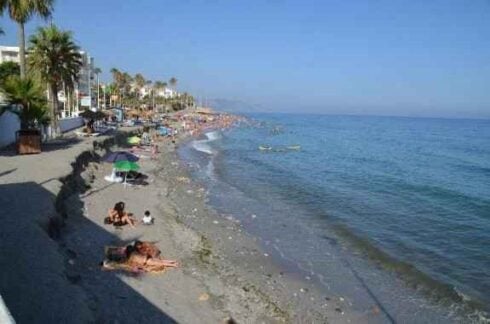A GREENPEACE report on beach erosion in Spain caused by rising sea levels says that Andalucia is one of the area’s worst affected by degeneration.
Serious concerns are also voiced about other regions including the Valencian Community.
The study analysed 8,000 kilometres of Spain’s coastline in the wake of global warming.
READ MORE:
- Spain’s eroding coastline: Images taken 70 years apart show how beach on the Costa del Sol is being ‘eaten’ by the sea
- Barcelona’s famous beaches lose 20% of their sand in a year: Local authorities blame winter storms
- Restoration work scheduled for only three of Estepona’s seven disappearing beaches ahead of summer season in Spain

Andalucia has 910 kilometres of coast and the document called ‘Crisis at All Costs 2024, says that the rise in sea levels will reach 45 centimetres by 2090 in Malaga, Almeria, Huelva, and Cadiz provinces.
Greenpeace talks about the risks of excessive construction and infrastructures as well as pollution and the construction of artificial barriers in coastal areas.
In Malaga province it highlights several building projects that it classifies as ‘wrong’.
Among the examples mentioned in Marbella are the Siete Revueltas Resort, located in an area identified as flood-like; the 5-star W Hotel (which is currently suspended due to the lack of its technical documentation) and the El Lago Club project.
It also criticises the Valle de Golf Resort in Mijas, which would be the 13th golf course in the municipality.
Two areas affected by the rise in sea level have been highlighted by Greenpeace- in Velez-Malaga and the Guadalmar area of Malaga City.
The government itself also warned of the state of the two areas, declaring them zones of serious regression.
In Guadalmar, it is the area between San Julian beach the Parador of the Malaga Golf Course, next to Arraijanal.
In Velez-Malaga, the section affected by a sea rise would be the surroundings of the Almanat nudist campsite in Almayate going to the Velez river- close to the urban centre of Torre del Mar.
Going north to the Valencia Community, Greenpeace claims that if CO2 emissions are not stopped by 2030, the sea will rise 12 centimetres in the Gulf of Valencia resulting in beaches losing around 12 metres in width.
They say the biggest beach risks are Moncofa, El Grao de Castellón, Nules, Xilxes and Els Estanys d’Almenara in Castellon province.
In Valencia province, warnings are out against Marjal dels Moros, Pucol, El Saler, L’Albufera, El Perellonet, El Perello Tavernes de Valldigna and Gandia in Valencia province.
In Alicante province, there is concern over the Marjal de Pego-Oliva, Santa Pola and the Torrevieja Natural Park.








